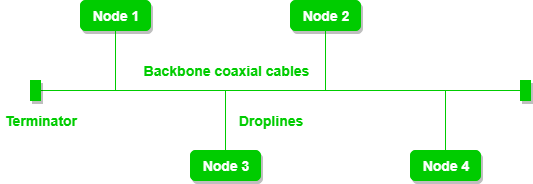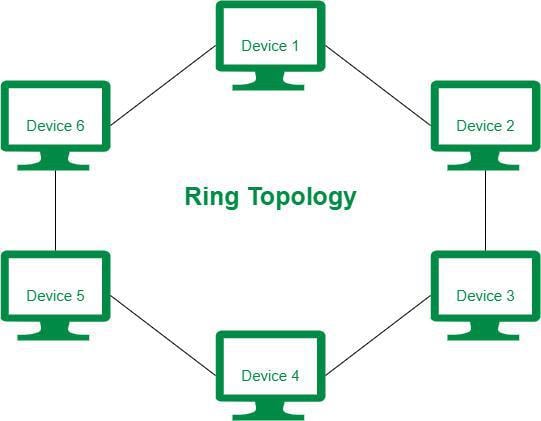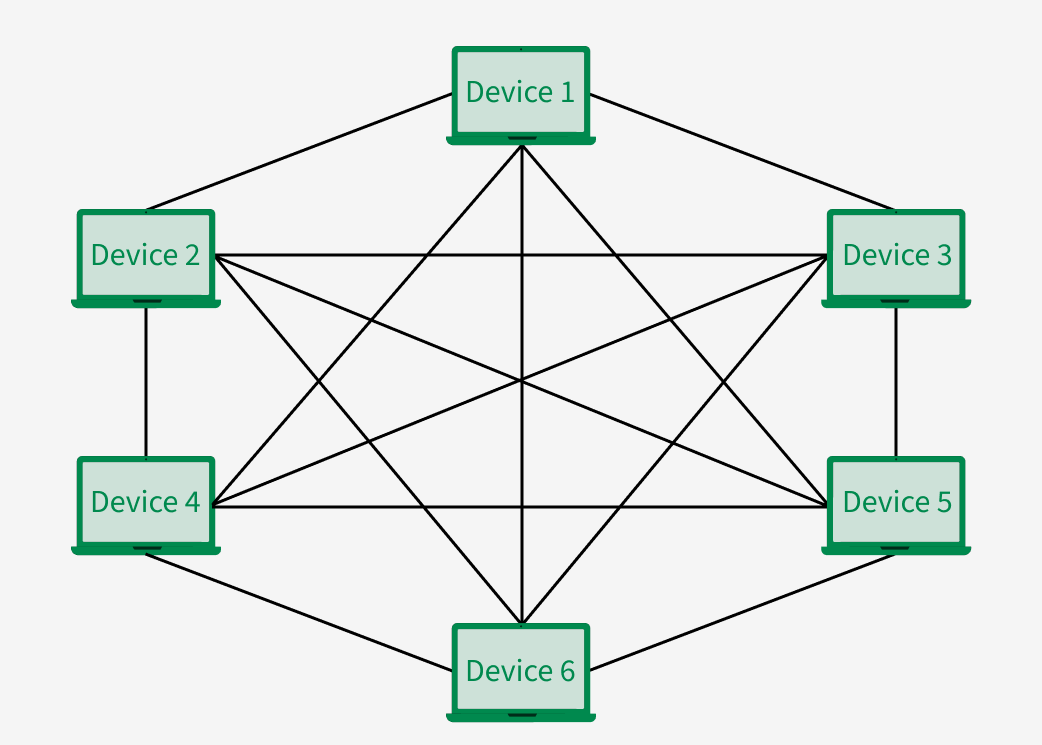Blog
SOHO network: What is it and How to set up?
Updated: December 2, 2024
Many programmers or company employees envision being able to leave work on time and continue to finish any unfinished work at home. This vision is achievable through SOHO networks, where members can access the company network through their terminal devices. So, what is a SOHO network? How can this kind of network be built? In this article, we will introduce SOHO networking and its related information.
Table of contents
- What is the SOHO network?
- What are the characteristics of a SOHO network?
- SOHO vs. Enterprise Network: What is the difference?
- Equipment needed to build a SOHO network
- Critical measures to protect SOHO networks
- Precautions for installing SOHO network
- Common SOHO network topologies
- How to troubleshoot common SOHO network problems?
- FAQ
- Conclusion
What is the SOHO network?
SOHO stands for Small Office/Home Office Network. This type of network is designed for small offices with 1 to 10 people. It is similar to creating a small LAN. It is similar to creating a small LAN.SOHO networks are primarily built in small offices or homes. They are easy to manage and cost-effective. They allow computers to connect to the company network or access shared resources, which allows for effective collaboration or information sharing for internal communication. This type of network offers unique advantages and powerful features in a small business or office.
What are the characteristics of a SOHO network?
- Flexibility and scalability: small office/home office networks are flexible and scalable.
- Combination of wired and wireless: Wired connections are reserved for desktop computers, printers, and end devices requiring high speed and stability. Meanwhile, wireless connections are reserved for flexible mobile devices such as laptops and smartphones.
- Shared resources: The SOHO network supports sharing resources such as printers and scanners. This facilitates members’ collaboration and handling of ad-hoc work issues at home.
- Security: Any network security is a top priority; firewalls, encryption, and other security measures are also required in SOHO networks.
- Easy to manage: SOHO network structure is relatively simple, compared with large enterprise network equipment, less functional. Therefore, there is no need to hire professional IT staff to maintain the network, and users can manage and maintain their small networks by mastering basic professional skills.
- Economic incentives: Because SOHO network users are fewer, the number of ports or capacity requirements when buying switches and other equipment is relatively low. Therefore, the cost of purchasing the equipment is less. Management and maintenance are also relatively easier, so the management and maintenance costs are also less. In summary, this type of small LAN is characterized by affordability.
SOHO vs. Enterprise Network: What is the difference?
Scale of operation: Enterprise networks are built in large companies with hundreds or thousands of employees. However, the small office/home office network is designed for small companies with 5~10 companies.
Operating Costs: Enterprise networks require high-end network equipment such as servers and need to hire specialized network IT technicians to maintain them, all of which cost high operating costs. SOHO networks are simple to set up, have basic network equipment, have fewer maintenance needs, and spend less on operating costs.
Configuration Complexity: Configuring an enterprise network involves subnetting and advanced security measures, making it more complex. In contrast, SOHO networks are easy to configure because they have less equipment and personnel.
Equipment needed to build a SOHO network
The following are the typical essential devices needed to create a SOHO network. The actual network size or functionality will affect the type of equipment required.
- Ethernet switches: Devices in an SOHO network can connect and communicate through switches. When choosing an Ethernet switch, consider parameters such as the number of ports(usually 4~8 ports), data transfer speed, etc. In addition, because the SOHO network does not have professional IT support staff, unmanaged switches are advisable.
- Router: When choosing a router, it is best to select one with basic security measures such as encryption, authentication, and firewall protection. The number of router ports is also something to consider.
- WAP: A Wireless Access Point provides a wireless network connection for mobile communication devices such as laptop computers and cell phones.
- Terminal equipment: The SOHO network needs all kinds of terminal equipment to meet the needs of small offices or home offices, including desktop computers, laptops, printers, IP phones, smartphones, and so on. Ethernet cables are required to connect wired end devices to other devices.

Critical measures to protect SOHO networks
SOHO networks contain essential corporate data, customer data, and personal data. Loss, leakage, or tampering with this data has serious consequences, so protecting small office/home office networks is a top priority. The following are the leading measures to protect the small office/home office network:
- Installation of firewalls: Firewalls can monitor and control network traffic; installing firewalls can avoid unauthorized access or malicious attacks.
- Set authentication: Set authentication for all network devices and accounts.
- Encrypt essential files: Encrypt and store important business documents.
- Pay attention to email and information security: Be wary of phishing emails and malicious links, and don’t easily click unfamiliar emails.
- Regularly update router firmware and set strong passwords to protect WIFI
- Install antivirus software on your phone and computer and turn on the firewall.
Precautions for installing SOHO network
Environment: Switches in SOHO networking usually do not come with fans due to noise impact considerations, so they need to be placed in well-ventilated areas to dissipate heat. In addition, you need to consider the router’s high humidity or high-temperature environment and switch off the harsh effects.
Equipment compatibility: When choosing SOHO network equipment, you must ensure its compatibility. This is conducive not only to the efficient operation of the equipment and stable data transmission but also to avoid the waste of human and material resources.
Future-oriented: Consider the current and future network requirements before installing the small office/home office network. For example, reserve 2 ports for switches and routers.
Common SOHO network topologies
The proper topology is crucial for data transmission, equipment maintenance, and other applications. Understanding the advantages and disadvantages of each type of topology will help you build a SOHO network.
Star Topology
All end devices are connected to a centralized hub or switch.

- Advantages: easy to manage, centralized configuration; a device failure will not affect the regular operation of other devices; easy to add, delete, and move devices;
- Disadvantages: If the central hub fails, the entire network goes down, and it is expensive to purchase hubs or switches.
Bus Topology
All end devices are connected to a central cable (bus).

- Advantages: simple cabling, easy to implement; low cable costs;
- Disadvantages: central cable failure, the entire network down; adding new equipment, network performance decline; cable length is limited, and it is not conducive to expansion.
Ring Topology
Each terminal device is connected to two other devices, forming a circular path.

- Advantages: equal resources; easy to install and configure.
- Disadvantages: difficult to troubleshoot; low flexibility to add new end devices to interrupt the network; unidirectional traffic;
Mesh Topology
Each end device is connected to every other end device in the network.

- Advantages: There are multiple data transmission paths, and if one data transmission path fails, another one can be used, reliable and stable;
- Disadvantages: The network structure configuration is complex, requires a lot of wiring, and is expensive.
How to troubleshoot common SOHO network problems?
If it is a wired connection, check if all cables are plugged in securely. However, If they are already plugged in, test if the Ethernet cable is damaged; if so, replace it with a new one.
If it is a wireless connection, ensure the router is turned on or restarted.
Finally, if restarting the end device does not solve the problem, contact your ISP for assistance.
FAQ
Q. What are the components of a SOHO network?
A. A typical small office/home office network comprises desktop or laptop computers, switches, routers, wireless access points, printers, modems, and other components.
Q. Does a SOHO network only use a wired connection?
A.SOHO networks usually use both wired and wireless connections. This ensures more stable and reliable operation of Ethernet cable-connected devices while meeting the flexibility requirements of mobile devices.
Q. What are the common challenges in managing SOHO networks?
A. Ensuring stable and reliable connectivity, network security, device updates, compatibility, and dealing with network failures without IT support staff.
Q. Can I access my small office/home office network remotely?
A.Yes, you can. By setting up a Virtual Private Network (VPN) connection, you can access your office or home office network resources from an external environment.
Q. How can I improve my SOHO network?
A. There are many ways to improve your small office/home office network, such as upgrading your router, adding multiple wireless access points, or improving the network topology (which can be tricky).
Q. What is the difference between a SOHO router and a home router?
A. SOHO routers are designed for small offices and home offices. In these office environments, they act as centralized equipment in SOHO networking, providing wired and wireless connectivity for computers, printers, and other devices and offering advanced security features. Home routers mainly provide Wi-Fi wireless connectivity.
Q. What are the benefits of a SOHO network for small business owners?
A. First of all, it is cost-effective. You don’t have to hire a professional IT technical support staff to maintain the network for an extended period or spend a lot of money on network equipment and cables. Second, it is easy to set up and maintain. Lastly, it is easy to work from home and can be done remotely.
Conclusion
SOHO networks are ideal for small office and home office environments. This article describes the definition of a SOHO network, how to protect it, and how to troubleshoot common problems. It also briefly describes the possible topologies and the components included in one. Hopefully, this article has given you a better understanding of SOHO networks.







